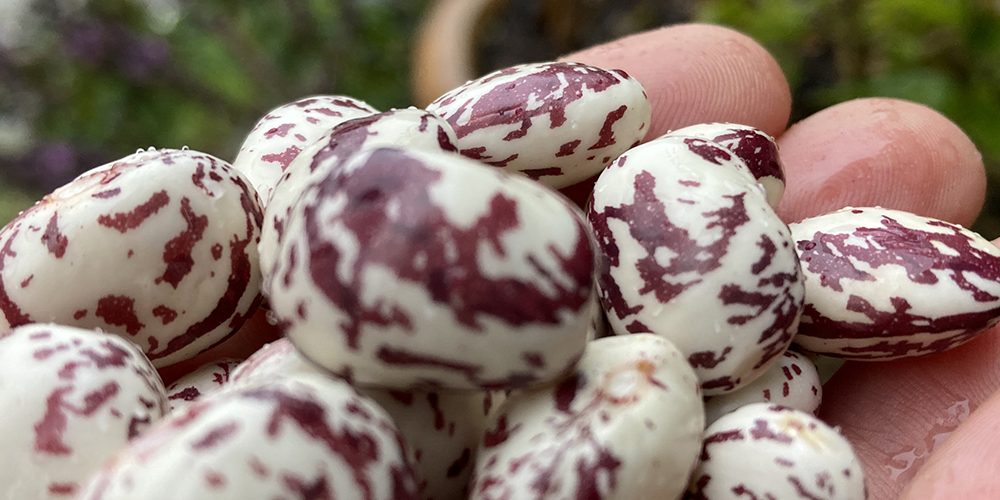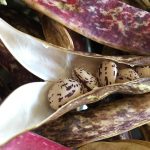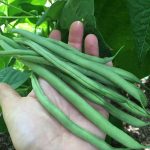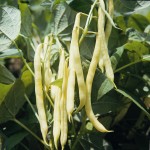- Choose a sunny position, sheltered from wind with well drained, fertile soil.
- Our climbing Borlotti beans will need a support – a wigwam or frame made from bamboo is best. Tie in with garden twine. Plants will then naturally wind bamboo around as they grow.
- Space 30-40cm apart
- Don’t plant out until all risk of frost is past (keep them in pots in greenhouse or sunny windowsill in the meantime)
- Protect from slugs (beer traps/slug barrier)
How to grow... Borlotti Beans
Rocket Growing Guides

Borlotti Beans at a Glance:
- Choose a sunny site that is sheltered from the wind
- Plant in rich, fertile soil or multipurpose compost
- Suitable for pots & containers – see below
- Water regularly, trying not to let soil dry out
- Borlotti Beans Growing Guide
How to Plant Borlotti Beans
How to Grow Borlotti Beans
- Water well and regularly. Don’t let the soil dry out.
- Keep weeds down.
- Protect from slugs.
Common Pests and Problems with Borlotti Beans
- Yellow/patchy/brown foliage – not enough nutrients/water – water well and regularly (so that soil doesn’t dry out), use a liquid feed fortnightly
- Not many fruits – poor pollination. Plant edible/companion flowers to encourage more beas etc.
- Leaf damage – slugs/snails – use beer traps. Do nightly slug patrol.
- Aphids/blackfly – these tiny black critters can sometimes be a problem. Spray off with hose or pick off foliage that are affected.
- Slugs/Snails – You’ll quickly see the tell tale signs of nibbled leaves and slime trails if slugs and snails are eating your plants. Set beer traps, put a barrier of natural slug deterrent (broken egg shells, grit etc) around the base of plants, do a dusk slug patrol and keep the plot as free from slug-friendly hiding places as possible. Read more slug tactics
How to Harvest and Store Borlotti Beans
- Borlotti beans are usually ready to harvest in late summer through to autumn.
- EITHER pick beans regularly when they reach approx 10-15cm + and the pods are still green or lightly dappled. These can be used as fresh beans cooked in the same ways as, say, runner beans.
- OR leave the pods on the plant until they turn deep purple and dry out at the end of the season. Harvest them during a dry spell (don’t leave them to get soggy during rainy periods in autumn!) and dry them out before podding them to get the beans inside. These can be fully dried out before being stored in kilner jars. Dig a thumbnail into the bean – if it scores, then the bean is not fully dry, so leave it a few more days on a tray in a warm, dry place.



